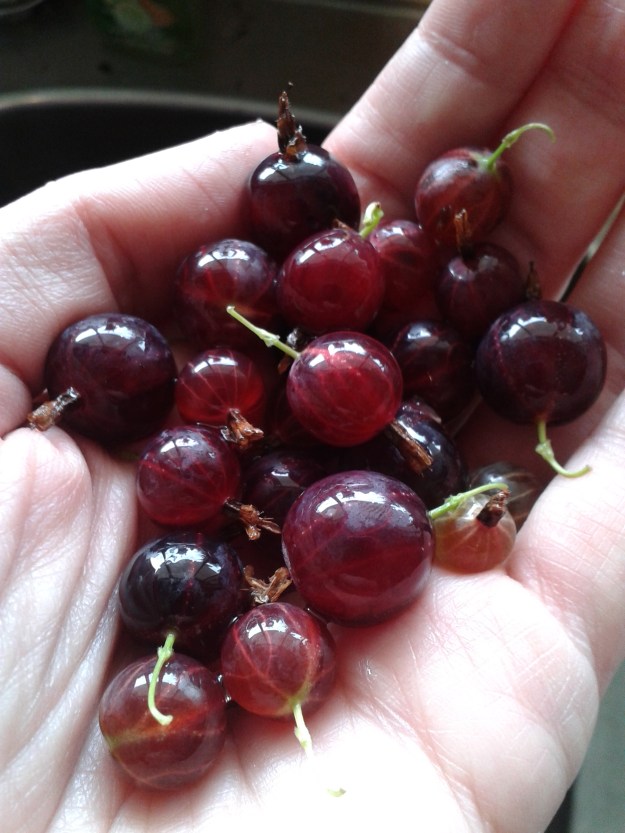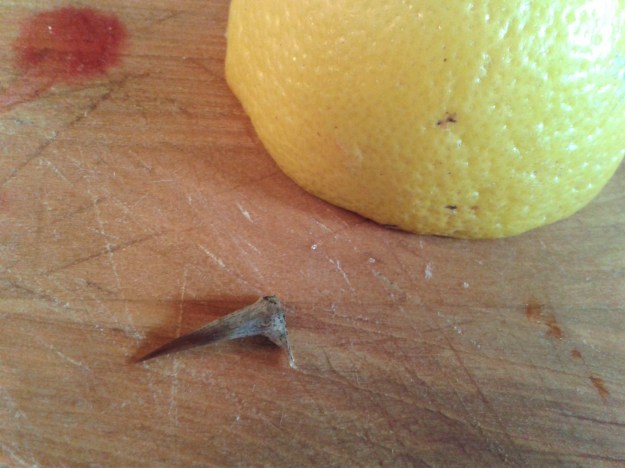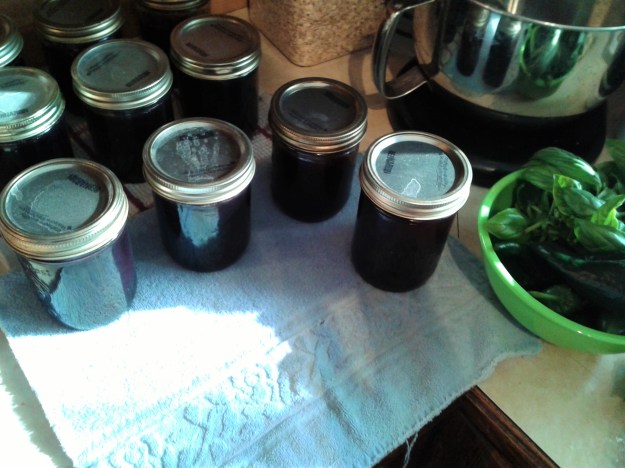Up until a few weeks ago if you had mentioned the words “low FODMAP” to me, I would likely have thought that I’d misheard you or that perhaps you were referring to some form of low weather pressure zone. Maybe that’s what’s been dropping all that snow back east? Alas, no. It is something far more troublesome… a huge dietary change.
For over a year now we’ve been struggling to figure out some dietary issues for Little Man. After a year of tests and tweaks and a complete lack of progress our pediatric dietician suggested that we might want to try a low FODMAP diet to see if that helps. Let me state right from the beginning that I am not a low FODMAP specialist, and everything that I’ve read states that you should never start a low FODMAP diet without first consulting your doctor. This is not a weight loss or fad diet, it’s a change in the way of eating for people who struggle with IBS, Celiac disease, or other gastric issues. In short, this whole thing revolves around the fact that there are certain foods that contain short chain sugars (FODMAP is an abbreviation for the scientific names of these foods, and can be checked out online for specifics) that when they get to the gut can ferment and create unfortunate symptoms in some people.
When the dietician first mentioned the low FODMAP diet to us, I was interested… until she mentioned that two of the high FODMAP foods that we would have to give up were garlic and onion. Seriously? How does one live, let alone cook, without garlic and onion? So I pushed the low FODMAP diet out of my mind and acted like it didn’t exist… until Little Man was still not healthy and nothing seemed to help. So on board we got, and thus began our saga of a dairy-free, wheat/barley/rye free, garlic and onion free, etc-free diet. Sigh… For 6-8 weeks we need to stick this out hard core, then after that we should be able to start one by one reintroducing restricted foods, seeing what does or does not react negatively, and keep on going. And, yes, I do know that low-lactose foods are allowed on the low FODMAP diet. Unfortunately Little Man reacts badly to those, so they are persona non grata (or victus non grata?) to us at this time. Heavy sigh…
With the print out of “foods to be avoided” in hand, I went through our pantry, fridge and freezer with a vengeance. Shelf stable foods that we could no longer eat were given to a local food bank, while the perishables were “donated” to the pigs. The pigs, by the way, are huge fans of this and welcome any such donations. Then I made dinner, and while the flavor was fine, overall the food just tasted bland. I wasn’t sure what to do to replace garlic and onion since it was banned in all forms, fresh or dried.
Since then I’ve learned a couple of tricks to add the lacking depth of flavor to our garlic-less and onion-less meals. The first thing I did was to use more spice in just about everything. While I cannot use garlic or onion powder, I’ve been digging deep into my stores of cumin, coriander, paprika, and just about anything else I can get my hands on. I’ve also been using colored peppers with reckless abandon. Normally I don’t splurge for those in the produce aisle, but in times such as these I’ve been looking for more flavors to add and some brightness to the dishes. The colored peppers fit the bill nicely, and as soon as the weather warms up a bit out here I’ll be planting some in our garden.
Another trick that I’ve been using is garlic-infused olive oil. While garlic itself (dried or fresh) is to be avoided (sob!), you are allowed to use garlic infused oil. For the first couple of tries, I would heat a little bit of oil in a pan and toss in a whole peeled clove. Once the clove browned, I would remove it and proceed as normal. Would I toss out that lovely browned clove? As Pete the Cat would say, goodness no! This was sliced up and given as a treat to Dave and myself since we are not fodMAP restricted. While Little Man didn’t get the actual garlic, he did get the flavor in the meal itself.
While this infusing of oil with garlic in the pan each night allowed us to have some garlic flavor, it became cumbersome. Most nights I don’t cook with much oil at all, and it was difficult to even coat the clove with oil let alone infuse any flavor. There’s also the fact that during the week I’m generally trying to get dinner going fast, and any steps that I can take to make dinner prep quicker are golden. Enter the glory of garlic infused olive oil. You can, in fact, infuse any type of oil that you generally cook with, including canola, grape seed or peanut oil. We cook mainly with olive oil, as well as using that in marinades, salad dressings, etc. so that is the oil that I chose.
A quick word of caution before we get to the recipe. During my research into garlic infused oil, I came across a number of cautions about simply dropping raw garlic into oil and letting it sit. This can lead to a rapid development of botulism and should not be done. Here’s a link where they discuss this problem (Garlicster).
It should also be noted that garlic infused olive oil only has a shelf life of about one week in the refrigerator. So if you aren’t sure that you will use two cups of olive oil over the course of one week, then simply cut the oil amount in half. I started with the two cups of oil since I knew that there were a number of recipes that I would be making that first week that required olive oil, including a couple of salad dressings, a marinade, and a low FODMAP version of garlic bread. If that didn’t use up the oil along with my regular cooking, then I had plans for a hummus type dip that would be amazing with that garlic infused olive oil.

Oh, for the love of garlic.
Garlic Infused Olive Oil Recipe
This is an intensely flavored garlic infused oil specifically designed for use in cooking when you cannot use actual garlic. If you want a lighter flavored oil, simply reduce the cooking time to 5 minutes. This infused oil is great to use in vinaigrettes, to flavor pastas, make marinades, for dipping bread, or in any of your regular cooking where you would use olive oil. Just be aware that it has a relatively short shelf life of about 1 week, so only make as much as you think you will use within that time frame.
Ingredients:
1 head of garlic
2 cups of olive oil
Directions:
- Dismember the head of garlic, disposing of any loose, papery skins that come off. Don’t be too finicky here, since you will have plenty of garlic skin to get rid of soon.

The dismembered head of garlic ready for bashing.
- Place the whole garlic cloves into a small metal bowl and cover with another similarly sized bowl. The bowls must be metal; glass, ceramics and plastic are not hard enough to properly bash the garlic and will not work. It is fine if one of the metal bowls fits into the other, as long as the garlic can’t come flying out the sides.

The reflection of the camera flash in the metal bowl makes the skins of the garlic look shiny, but they haven’t been peeled yet. That comes next…

The bowls don’t have to be the same size. In fact, having the smaller bowl fit into the larger bowl made it easier for me to hold on to them both while I shook their skins off. Just be sure that both bowls are metal, or this won’t work.
- Shake the bowls hard for a good 15 seconds, then open them up to see if you need to shake them some more. This is a great task for little kitchen helpers, but gauge your child’s skill level. You know what s/he is capable of, and what could create a lovely mess. Little Man is not quite ready for this task, but he’s getting there. After being shaken for 15 seconds or so the garlic should have bashed itself right out of the skins. If any are still clothed, simply pull off the skins, since they are likely cracked and easy to peel.

Oh yeah… After a good 15 seconds of shaking the cloves literally fell out of their skins. Two weren’t completely undressed yet, but I just needed to pull off the already cracked skin and they were done.

Your fingers still get a bit sticky removing the cloves from the pile of skins, but when trying to peel an entire head of garlic… I’ve never had it go so quickly and with so little mess.
- Cut the cloves in half the long way and place them in a small sauce pan, just large enough to hold them and 2 cups of olive oil. Pour the olive oil over the sliced cloves and heat the mixture over medium heat until it just starts to bubble. Cook the garlic in the oil for 10 minutes. If the garlic begins to brown quickly, carefully remove the pan from the heat and let it cool briefly before returning it to the stove. Monitor it regularly to make sure nothing is burning. After 10 minutes carefully remove the pan from the heat, cover it and let the garlic steep in the oil for one hour.

I halved the garlic cloves since I greedily want as much garlic flavor in the oil as I can. If you want a milder flavor, then omit that step.

The garlic cloves in the bath before heating.

The garlic should just start to bubble in the oil over medium heat. If it starts to brown too quickly, carefully remove it from the heat for a minute or two and then put it back on. No burnt garlic here, please, or your whole batch will taste burnt.

This is the garlic after 10 minutes simmering in the oil. They are lightly brown all over, but still look like they have some moisture left inside. Take them off the heat, cover them, and let them steep.

This is the garlic after steeping in the oil and cooling to room temperature for an hour. Most of the moisture is gone, and they’ve given all of their awesome garlic-iness to the oil. Spell check doesn’t like that one.
- Once it has cooled to room temperature, pour the oil through a strainer into a clean glass jar with a lid. The oil can be used immediately, or it can be stored in the refrigerator in a glass jar for up to a week. If you think that you won’t use two cups of oil over the course of a week, simply cut the quantity of oil in half and make the same thing with 1 cup of oil.

I didn’t want to spill the oil as I strained it into the glass jar, so first strained it into my measuring glass that had held the olive oil for this recipe. Then I poured from the spout of the measuring glass into my storage jar.

Lovely dessicated garlic and beautifully infused garlic olive oil.

With a tight fitting lid this garlic infused olive oil will last for up to one week in the refrigerator. I already have many plans for my oil, including a low FODMAP garlic bread, so stay tuned.
Click here for a printable version of the Garlic Infused Olive Oil recipe.
P.S.
Since originally writing this blog post (it sat around a bit until I could take the pictures) we have found that as restrictive as it is, the low FODMAP diet has had a tremendously positive effect on Little Man. We are looking forward to being able to try reintroducing some of the high FODMAP foods back into his diet eventually, but for now the sacrifice of the dietary change has been well worth it.












































